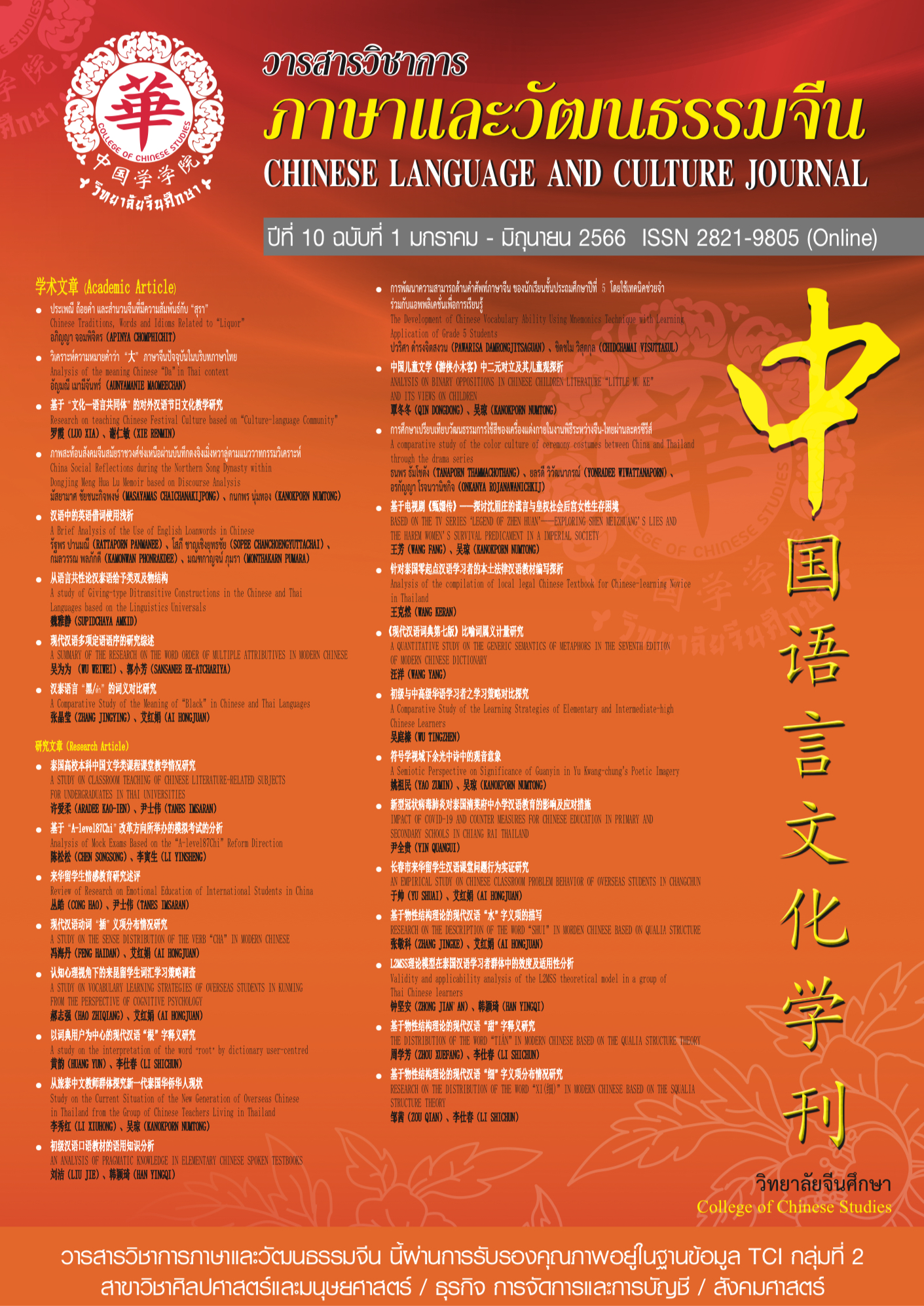RESEARCH ON THE DESCRIPTION OF THE WORD"SHUI" IN MORDEN CHINESE BASED ON QUALIA STRUCTURE
Keywords:
Qualia structure, Semantic description, CorpusAbstract
Under the background of the globalization of Chinese language, the development of international Chinese language education is in a good overall trend. As one of the oldest tools for teaching and learning, the importance of dictionaries is self-evident. As one of the most difficult and academic parts in dictionary research, interpretation has always been concerned.Most of the existing studies focus on the division of semantics and the extended relationship between semantics, ignoring the in-depth description of semantics. Based on the theory of qualia structure, according to the combination mode, collocation habits and semantic interpretation of "SHUI" in real corpus, combined with the existing definitions in dictionaries, this paper re-describes the distribution of "SHUI" in modern Chinese and explores the causes of its derivative distribution of meanings, to explore the application of descriptive discourse definitions in existing dictionaries. In order to provide useful reference for the description of the natural words in the Chinese learning dictionary.
References
冯海霞.卢东民.语文词典中动物词条系统释义的考察及释义模式的优化.[J].辞书研究,2011(06):15-26
李仕春.基于语料库的现代汉语“黄”字义项分布研究.[J].中国海洋大学学报(社会科学版),2016(05):103-109
李仕春.类型学视野下的现代汉语动物多义词义项分布研究.[J].中国海洋大学学报(社会科学版),2017(06):99-104
李仕春.框架语义学视阈下的词义衍生研究--以多义词“看”为例.[J].东北师大学报(哲学社会科学版),2020(01):20-25
宋作艳.从语言关联看生成词库的认知取向.[J].北京大学学报(哲学社会科学版),2017(2):151-160
袁毓林.基于生成生词库论和论元结构理论的语义知识体系研究. [J].中文信息学报,2013(06):23-30
袁毓林.汉语名词物性结构的描写体系和运用案例.[J].当代语言学,2014(01):31-48
中国社会科学院语言研究所词典编纂室.现代汉语词典(第7版)[Z].北京:商务印书馆,2016
李行健主编.现代汉语规范词典(第3版).[Z].北京:外语教学与研究出版社,语文出版社,2014
商务印书馆辞书研究中心.现代汉语学习词典[Z].北京:商务印书馆,2010
张志毅主编.当代汉语学习词典.[Z].北京:商务印书馆,2020
Downloads
Published
How to Cite
Issue
Section
License
Copyright (c) 2023 Chinese Language and Culture Journal

This work is licensed under a Creative Commons Attribution-NonCommercial-NoDerivatives 4.0 International License.
บทความที่ได้รับการตีพิมพ์เป็นลิขสิทธิ์ของวารสารภาษาและวัฒนธรรมจีน มหาวิทยาลัยหัวเฉียวเฉลิมพระเกียรติ
บทความใน “วารสารวิชาการภาษาและวัฒนธรรมจีน” เป็นทรรศนะของผู้เขียนโดยเฉพาะ กองบรรณาธิการไม่มีส่วนในความคิดเห็นในข้อเขียนเหล่านั้น




